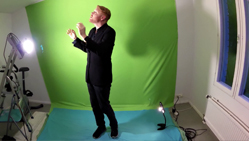
Contact
OTHER SPACES INSTITUTE
Suite 264 / 585 Little Collins StMelbourne VIC 3000 Australia
info@otherspaces.org

Suite 264 / 585 Little Collins StMelbourne VIC 3000 Australia
info@otherspaces.org

Thirty-two illustrated lectures tracing the history of art from cave paintings to today.1. Paleolithic to Byzantine2. Prehistoric, Egyptian, Greek and Roman Art3. Late Byzantine, Medieval, and Early Gothic4. Early Christian, Medieval and Early Byzantine5. Proto and Early Renaissance6. High Renaissance7. Late Renaissance and Mannerism8. Baroque and Rococo9. Renaissance to Rococo10. Neo-Classical and Romantic11. Pre-Raphaelites and Realists12. Neo-classicism to Impressionism13. Impressionism and Post-Impressionism14. Fauvism and Expressionism15. Surrealism and Dada16. Abstraction17. Bauhaus18. Pop Art and Op Art19. Fluxus20. Conceptual Art21. Land Art22. Minimalism23. Performance Art24. Video Art25. Post-modernism26. Contemporary Art27. Young British Artists28. Installation Art29. Aboriginal Art30. History of Australian Art31. Contemporary Australian Art32. Contemporary art from Asia-Pacific32 x slideshows (.ppt/.pdf); Resource for teachers (.pdf); Interactive Assessment Task (.pdf/.html)

A series of illustrated video lectures and education packs on the History of Representations of: 1. Fear2. Masculinities 3. Sexuality4. Madness5. Humour5 x 90 minute lectures (.mp4); 5 x artwork slideshows (.ppt/.pdf); Resource for teachers (.pdf); Interactive Assessment Tasks (.pdf/.html)

This series examines different ways of looking at art, distinguishing between traditional, modern and contemporary modes of locating meaning in the experience of art. What you see is what you get.When we talk about meaning in art, we often consider the subject matter of an artwork. Today, many contemporary artworks become meaningful in subjective ways. This means that rather than the subject of an artwork being contained in the art object, the viewer’s experience, perspective and unique interpretation become the subject.4 x 45 minute lectures (.mp4); 4 x artwork slideshows (.ppt/.pdf)